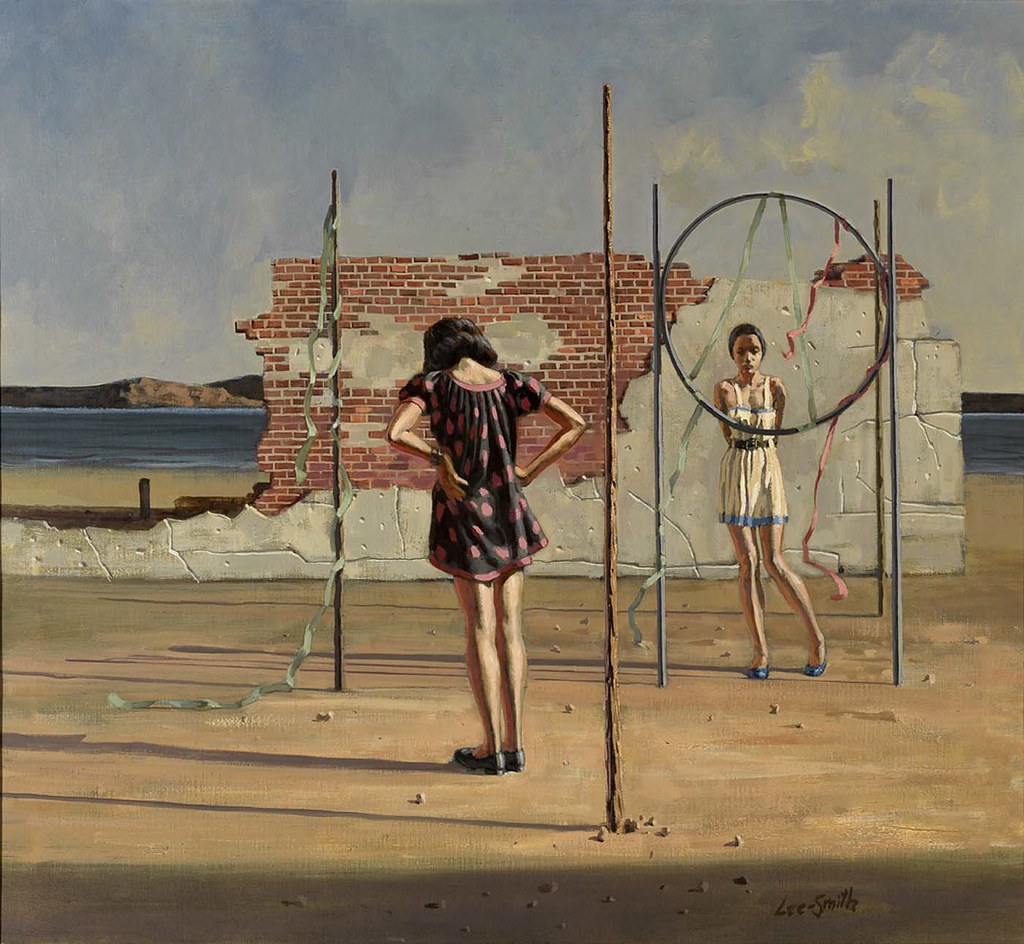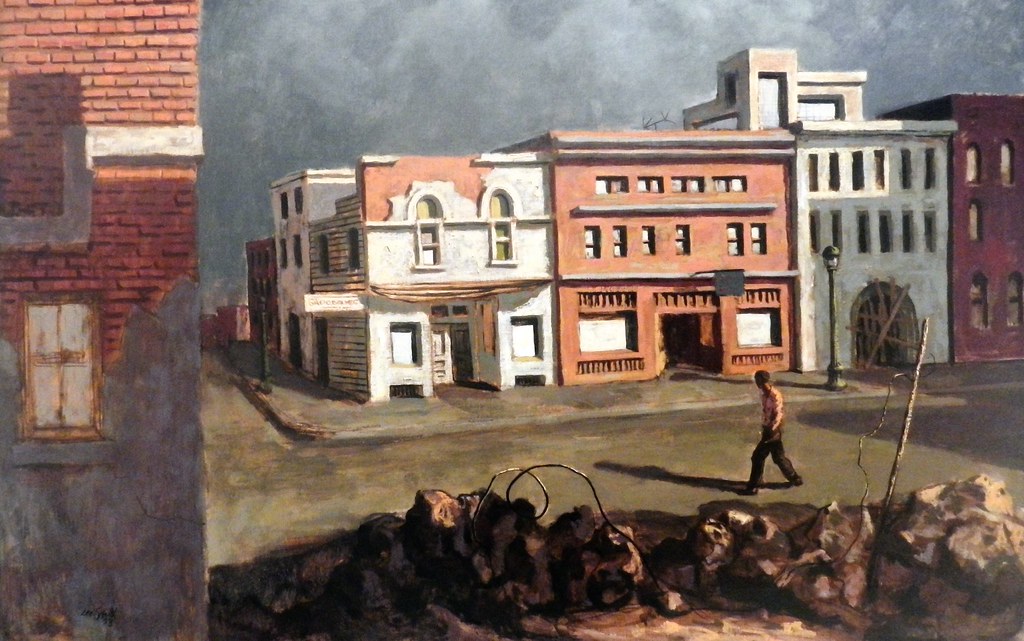.
Image may be NSFW.
Clik here to view.
Untitled (RooftopView): HughieLee-Smith (1916-1988), 1957, oil on masonite, 61 x 63.5 cm (Cleveland Museum of Art)
Clik here to view.

Untitled (RooftopView): HughieLee-Smith (1916-1988), 1957, oil on masonite, 61 x 63.5 cm (Cleveland Museum of Art)
I put no particular value on the simple objective of modernity. Theelement of the temporal location to an artist's creation is of very secondary importance; it can be left to the impressionist or historian just as well. It seems to me that a poet will accidentally define his time well enough simply by reacting honestly and to the full extent of his sensibilities to the states of passion, experience and rumination that fate forces on him, first hand. He must, of course, have a sufficiently universal basis of experience to make his imagination selective and valuable. His picture of the "period," then, will simply be a by-product of his curiosity and the relation of his experience to a postulated "eternity."
I am concerned with the future of America, but not because I think that America has any so-called par value as a state or as a group of people. It is only because I feel persuaded that here are destined to be discovered certain as yet undefined spiritual quantities, perhaps a new hierarchy of faith not to be developed so completely elsewhere. And in this process I like to feel myself as a potential factor; certainly I must speak in its terms and what discoveries I may make are situated in its experience.
But to fool one's self that definitions are being reached by merely referring frequently to skyscrapers, radio antennae, steam whistles, or other surface phenomena of our time is merely to paint a photograph. I think that what is interesting and significant will emerge only under the conditions of our submission to, and examination and assimilation of the organic effects on us of these and other fundamental factors of our experience. It can certainly not be an organic expression otherwise. And the expression of such values may often be as well accomplished with the vocabulary and blank verse of the Elizabethans as with the calligraphic tricks and slang used so brilliantly at times by an impressionist like Cummings.
I am concerned with the future of America, but not because I think that America has any so-called par value as a state or as a group of people. It is only because I feel persuaded that here are destined to be discovered certain as yet undefined spiritual quantities, perhaps a new hierarchy of faith not to be developed so completely elsewhere. And in this process I like to feel myself as a potential factor; certainly I must speak in its terms and what discoveries I may make are situated in its experience.
But to fool one's self that definitions are being reached by merely referring frequently to skyscrapers, radio antennae, steam whistles, or other surface phenomena of our time is merely to paint a photograph. I think that what is interesting and significant will emerge only under the conditions of our submission to, and examination and assimilation of the organic effects on us of these and other fundamental factors of our experience. It can certainly not be an organic expression otherwise. And the expression of such values may often be as well accomplished with the vocabulary and blank verse of the Elizabethans as with the calligraphic tricks and slang used so brilliantly at times by an impressionist like Cummings.
Hart Crane (1899-1932): from General Aims and Theories (1925)
Image may be NSFW.
Clik here to view.
Clik here to view.

Confrontation: HughieLee-Smith (1916-1988), c. 1970, oil on canvas, 83.8 x 91.4 cm; image by Gandalf's Gallery, 23 October 2009 (Smithsonian American Art Museum)
Image may be NSFW.
Clik here to view.

Sunday Afternoon: HughieLee-Smith, 1953, oil on masonite; image by jyoga3, 18 August 2012 (San Diego Art Museum)
